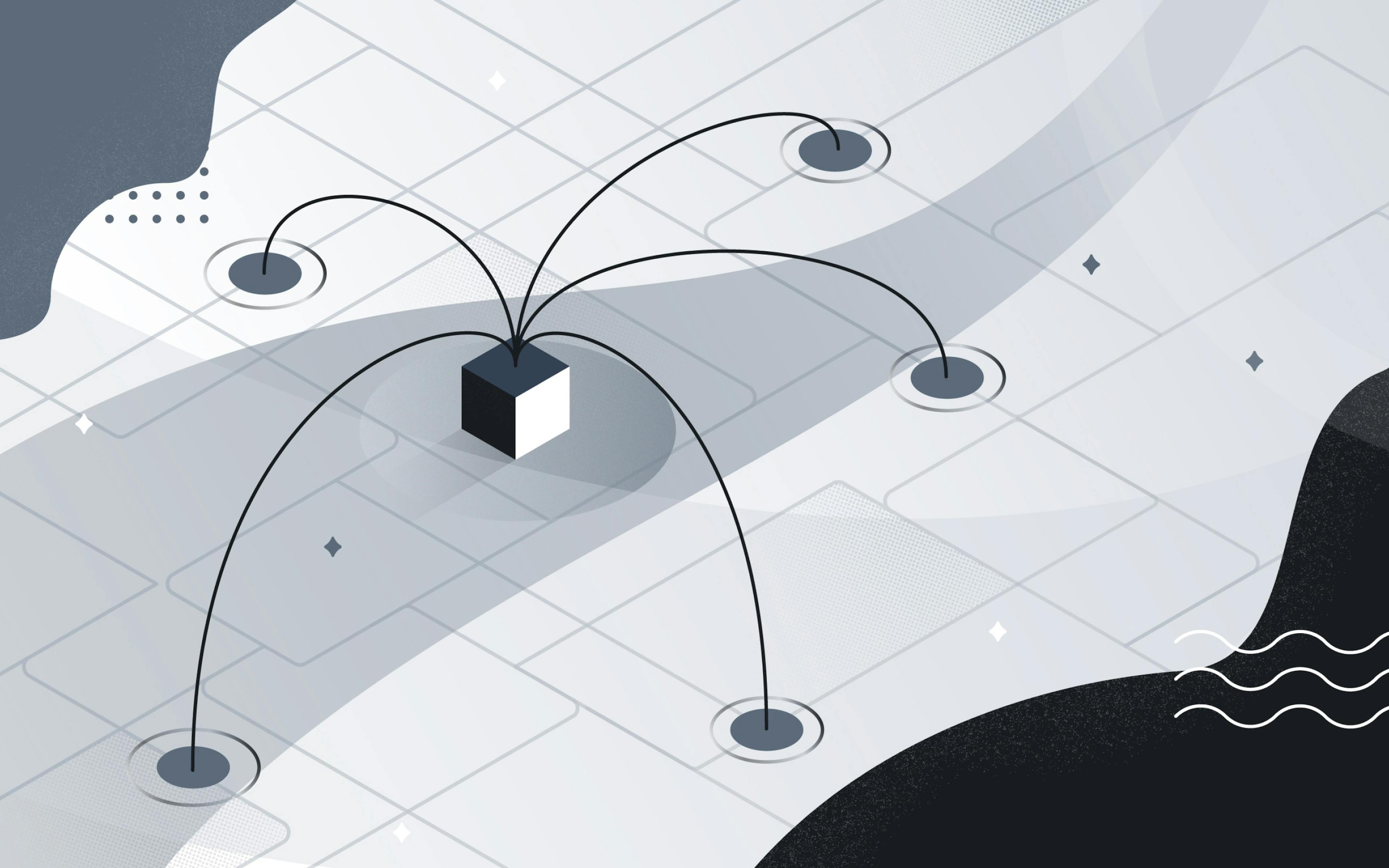Learn Center
Crypto 101
What’s a Blockchain Node?
What’s a Blockchain Node?

In telecommunications and software engineering, a "node" refers to a more extensive interconnected network component. In crypto, however, a node is one of the components that run a blockchain's algorithm to verify and authenticate each transaction.
A blockchain is essentially a digital distributed ledger that records all cryptocurrency transactions. As the name implies, each blockchain is a series of "chained" blocks.
Every blockchain is made of nodes. Nodes are generally computer systems that contain a copy of a blockchain's primary protocol and its entire transaction history. Due to decentralization, any individual can run a node anywhere in the world as long as they’re connected to a decentralized blockchain network and have the required resources.
Read on to find out the various types of nodes, their functions, and what you can do if you want to run a node.
What are nodes used for?
Nodes can create, send, and receive blockchain data. Their primary purpose is to validate, record, and broadcast each transaction on the network. They ensure that the blockchain is functioning properly and has the ability to reject transactions if they’re malicious. They’re also responsible for executing each blockchain’s consensus mechanism, which is a process that blockchains follow to confirm and validate transactions. The two most common consensus mechanisms are proof-of-work (PoW) and proof-of-stake (PoS).
Miners use nodes, or mining nodes, to carry out crypto mining, a process that requires advanced hardware and software to solve complex mathematical equations and generate new blocks.
Specific nodes are also used as crypto wallets, like traditional physical wallets, but store cryptocurrency instead of cash and cards.
Characteristics of nodes
Nodes are the fundamental components of a blockchain. They ensure blockchains are decentralized (if applicable), allowing any individual on the planet to participate as a node if they have the will and resources to do so. Since individuals maintain nodes at random, information and data remain democratized and open-sourced.
This helps make crypto a completely independent landscape, maintaining the philosophic integrity that Bitcoin creator Satoshi Nakamoto intended.
Nodes help facilitate every operation on the blockchain, but each node performs a different function. Therefore, different types of nodes exist that serve specific use cases and specialized functions.
Types of nodes
Nodes receive and broadcast transactions across a blockchain to keep it running, but they might differ depending on the blockchain and its function. Here are the three main types of blockchain nodes:
Full nodes
Full nodes contain a full blockchain. Each block on the chain is kept in full nodes. The individuals behind full nodes often have an extensive understanding of the blockchain, making them ideal validators for transactions.
Containing entire blockchains needs a large amount of storage space to hold the blocks. However, blockchain nodes can be "compressed" through pruning, which involves deleting unnecessary surplus data to save storage space. This allows more room for future transactions and faster network speeds.
Light nodes
Light nodes, also called lightweight nodes, don't contain data from the entire history of a blockchain. Instead, they only store a partial set of the data, still ensuring transactions are accurate. Many serve as crypto wallets. Light nodes link to full nodes and act as a bridge between wallets and the blockchain. This provides a straightforward approach to buying, selling, and trading cryptocurrency on a crypto exchange via the blockchain.
Masternodes
Masternodes are similar to full nodes. However, they're solely used to validate and store transactions and can’t contribute new blocks to the blockchain. Masternode owners receive incentives for validating efforts in the form of the blockchain's native cryptocurrency.
Why node size matters
Some centralized blockchains require you to go through a registration process if you want to establish a node. This, some argue, leads to centralization as the only nodes that are run are approved.
Depending on the blockchain, nodes have different technical requirements. It’s important for decentralization that requirements are not too bulky, as it prevents every day people from running a node. Many have critiqued Solana’s node requirements for being too bulky, meaning the protocol can be construed as more centralized.
How do you run a node?
Remember, you’ll need a good amount of storage, memory, and processing power to run a blockchain node. You’ll also require high internet speeds and the latest operating system version.
Ensure your system can run for a minimum of six hours daily without interruptions. Many operating systems and computer models enter a "low-power" or "sleep" mode to save energy when the system is left idle. Make sure your system has this option turned off and can function for extended periods without overheating or slowing down.
Once you have the proper hardware, you’ll need the appropriate software to run your node. Blockchain nodes don’t come with universally compatible software, so you’ll need to download the software that works on the blockchain you want to run a node on.
Running a node will require considerable space, time, and energy, so plan accordingly.
Wrapping up
Running a node can be a great way to participate in a cryptocurrency’s blockchain, especially if you’re looking for rewards as a miner or a validator. However, mining, staking, and running light nodes all require advanced software and technical know-how to run.
Subscribe to our blog to stay updated on all the latest offers and news from the world of cryptocurrency.